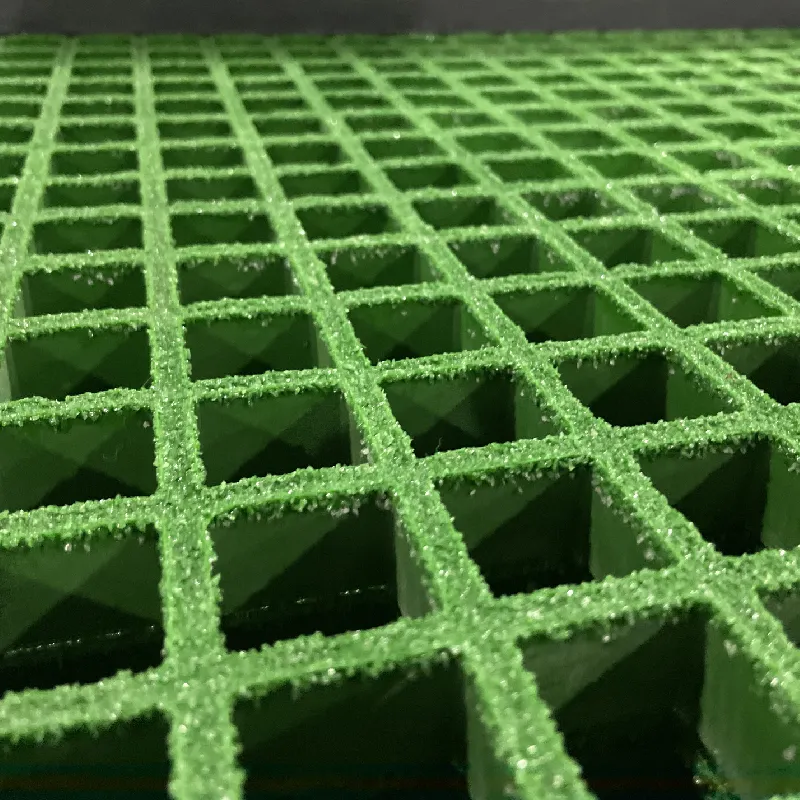loading...
- No. 9, Xingyuan South Street, Dongwaihuan Road, Zaoqiang County, Hengshui, Hebei, China
- admin@zjcomposites.com
- +86 15097380338
- Welcome to visit our website!
frp reinforcement bars
The Importance of FRP Reinforcement Bars in Modern Construction
In recent years, the construction industry has seen a significant shift towards the use of advanced materials, particularly Fiber-Reinforced Polymer (FRP) reinforcement bars. These innovative materials are revolutionizing how structures are designed and built, providing enhanced durability, reduced weight, and increased resistance to environmental influences. This article explores the advantages, applications, and future of FRP reinforcement bars in modern construction.
What are FRP Reinforcement Bars?
FRP reinforcement bars are composite materials made from a polymer matrix reinforced with fibers, such as glass, carbon, or aramid. These bars are engineered to offer mechanical properties that can surpass traditional steel reinforcement in many applications. The unique combination of lightweight materials and high tensile strength makes FRP bars a superior choice for many construction projects.
Advantages of FRP Reinforcement Bars
1. Corrosion Resistance One of the most significant benefits of FRP bars is their resistance to corrosion. Unlike conventional steel reinforcement, FRP bars do not rust when exposed to moisture and chemicals, making them ideal for structures in marine environments, wastewater treatment plants, and areas with high salinity.
2. Lightweight FRP bars are significantly lighter than steel, which simplifies transportation, handling, and installation on construction sites. This lightweight property can lead to reduced overall project costs, as fewer resources are required for lifting and erecting heavy structures.
3. High Strength-to-Weight Ratio Despite their lightweight nature, FRP bars have an impressive strength-to-weight ratio. This characteristic allows for the design of slender, efficient structures without compromising on safety or durability.
4. Non-Magnetic Properties FRP bars are non-magnetic, which makes them suitable for use in electromagnetic-sensitive applications, such as MRI facilities or laboratories. Their non-conductive nature also contributes to the safety of electrical installations.
5. Durability and Longevity FRP materials have a longer service life compared to traditional materials. When properly designed and implemented, structures using FRP reinforcement can last significantly longer, reducing the need for repairs and replacements.
Applications of FRP Reinforcement Bars
frp reinforcement bars

Given their numerous advantages, FRP reinforcement bars are increasingly used in a variety of construction applications
- Bridge Construction The lightweight and corrosion-resistant features of FRP bars make them ideal for bridge applications, where reducing dead load is crucial. Many bridges worldwide now incorporate FRP reinforcement to enhance their longevity.
- Parking Structures Parking garages are often subjected to de-icing salts and moisture, leading to potential corrosion of steel reinforcement. Using FRP bars in these structures can drastically improve their durability and maintenance cycles.
- Marine Structures In coastal areas, structures like docks, piers, and seawalls benefit greatly from the corrosion resistance of FRP reinforcement, as they are frequently exposed to saltwater conditions.
- Highway Infrastructure The application of FRP in retaining walls, sound barriers, and roadways is on the rise, with many civil engineers appreciating their strength and longevity.
Future of FRP Reinforcement Bars
The future of FRP reinforcement bars appears bright, with ongoing research focused on improving their material properties and expanding their applications. Innovations in manufacturing techniques, such as 3D printing and advanced composite fabrication methods, are expected to increase the availability and reduce the costs of these reinforcement bars.
Moreover, as sustainability becomes a primary focus in construction, the use of FRP materials aligns well with environmentally friendly practices. Their longevity and reduced maintenance needs contribute to less waste and fewer resources consumed over time.
Conclusion
FRP reinforcement bars represent a significant advancement in construction materials. Their unique properties offer numerous benefits over traditional alternatives, making them an attractive choice for modern engineering challenges. As technology continues to advance, the integration of FRP bars into construction practices is likely to become more prevalent, transforming the industry and contributing to more resilient and sustainable infrastructure. Embracing these innovations will be crucial for future-proofing our built environment against the demanding conditions of the 21st century.
-
The Rise of FRP Profiles: Strong, Lightweight, and Built to LastNewsJul.14,2025
-
SMC Panel Tanks: A Modern Water Storage Solution for All EnvironmentsNewsJul.14,2025
-
GRP Grating: A Modern Solution for Safe and Durable Access SystemsNewsJul.14,2025
-
Galvanized Steel Water Tanks: Durable, Reliable, and Ready for UseNewsJul.14,2025
-
FRP Mini Mesh Grating: The Safer, Smarter Flooring SolutionNewsJul.14,2025
-
Exploring FRP Vessels: Durable Solutions for Modern Fluid HandlingNewsJul.14,2025
-
GRP Structures: The Future of Lightweight, High-Performance EngineeringNewsJun.20,2025
